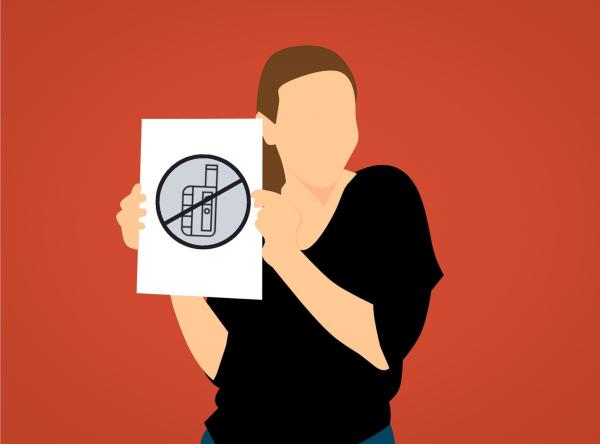Federal regulators are deeply concerned about flavored tobacco, especially vaping products. “The United States has never seen an epidemic of substance use arise as quickly as our current epidemic of youth use of e-cigarettes,” former Health and Human Services Secretary Alex Azar announced in January 2020. Not to be outdone, then-FDA Commissioner Dr. Stephen Hahn added that his agency is committed to dramatically limiting “children’s access to certain flavored e-cigarette products we know are so appealing to them ...”
Azar's and Hahn's comments helpfully summarize the ongoing panic surrounding electronic cigarettes. A quick Google search for “teen vaping flavors” returned some 356,000 results, many of them aping the same message. “Fruity flavors lure teens into vaping longer and taking more puffs, study says,” the first result from the LA times warned. “The Tobacco Industry Has a Kid's Menu,” the website Flavors Hook Kids similarly complained.
A a parent, I share this concern about underage nicotine use. I definitely don't want children using tobacco. But as an ex-smoker who quit with the help of e-cigarettes, I feel obligated to point out the deficiencies in the FDA's messaging, and there are several the agency needs to account for.
Amid all the panic about teen vaping, regulators and anti-smoking groups have overlooked clear evidence that flavored e-cigarettes help adult smokers give up tobacco. They have likewise exaggerated the possibility that vaping attracts non-smoking teens, and all but ignored other very harmful products that are routinely sold in a variety of flavors.
Adults like things that taste good
Believe it or not, our interest in flavor doesn't cease when we turn 18. Humans enjoy flavorful foods throughout our lives, and indeed there's a sound biological reason for this: things that taste good contain the nutrients we need to survive. “Human taste abilities have been shaped, in large part, by the ecological niches our evolutionary ancestors occupied and by the nutrients they sought,” Rutgers University researcher Paul Breslin wrote in a 2013 paper. “They would have used their sense of taste to identify nutritious food items.”
This isn't to say that flavorful foods and drinks in our modern environment are necessarily good for us. The point is that we have an ingrained desire to seek out flavor, which we can use to our advantage in many ways. For example, consuming artificial sweeteners promotes weight loss because it slashes our caloric intake while preserving the flavor profile of soda and other items we enjoy. A similar case can be made for electronic cigarettes.
The case for flavored vapes
Vaping is an effective harm-reduction tool because it delivers the nicotine smokers desire without the massive dose of carcinogens found in combustible tobacco. But recent research has shown that the wide variety of flavored nicotine liquids paired with vaping devices also help smokers give up cigarettes.
I've previously summarized this literature elsewhere, but to cite just one example, a 2016 study found that flavor selection clearly influenced vaping rates among current smokers. According to the researchers,“The present study suggests that flavorings per se will make a difference in the adoption patterns of e-cigarettes by current smokers [my emphasis].” A March 2021 paper went even further, concluding that “flavor was the most important factor in eCig appeal in a cohort of 18-to-30 year old adults in the U.S., followed by product messaging and nicotine level.”
Teen vaping rates are low
Research has also shown that non-smoking teenagers aren't especially interested in e-cigarettes, flavored or not. “Nonsmoking teens’ interest in e-cigarettes was very low,” a 2015 study concluded. “Adult smokers’ interest, while modest, was significantly higher overall and for each flavor. Teen interest did not vary by flavor, but adult interest did.”
Why would teenagers in this study have so little interest in flavored vaping products? Because most teenagers do not smoke or vape. “Non-smoking high school students are highly unlikely to use e-cigarettes … By contrast, current smokers are likely to use e-cigarettes and on more days,” noted the authors of another 2016 study. A January 2020 paper evaluating the National Youth Tobacco Survey (NYTS) reached a similar conclusion. Reviewing the smoking and vaping habits of 20,189 teenagers (ages 9-19 years old), the researchers found that:
“In 2018, 81.4% of students had not used any tobacco or vapor product in the p30d [past 30-days], and 86.2% had not vaped in the p30d … The majority of vapers ... were concurrent p30d or ever tobacco users. About 4% of students were tobacco naïve and vaped in the p30d, but few (0.4%) vaped regularly on 20 or more days.
The situation has improved since these studies were published. As neurobiologist Charles Gardner noted recently, US teen vaping dropped 29 percent between 2019 and 2020, and another 42 percent between 2020 and 2021. Just three percent of US high school kids vape nicotine daily, the CDC reported in October 2021, most of whom smoked before trying e-cigarettes.
All this research illustrates that regulators and anti-smoking groups have framed the conversation incorrectly. Flavored vaping products do not uniquely appeal to children, as our knowledge of human biology and the growing body of vaping research confirms. The more reasonable conclusion is that the vaping industry markets flavored products because its adult customer base will buy them.
Hypocrisy abounds
Almost 25 percent of 14- to 15-year-olds consume alcohol, and 37 percent of high-school students use marijuana. These numbers dwarf teen-vaping rates, yet I've seen no FDA-sponsored "Real Cost" campaign aimed at reducing substance abuse. There has been no nationwide push to get Pinnacle's whip-cream flavored vodka off store shelves, nor has any “tough on booze” politician slammed Budweiser for their “kids menu” laden with fruit-flavored hard seltzers.
We know these products can be deadly. Underage drinking has been linked to car crashes, homicides, alcohol overdoses, falls, burns, drowning, and suicides. While most THC and CBD products remain unregulated and many states liberalize their marijuana restrictions, people routinely show up at the emergency department in need of treatment for cannabis hyperemesis syndrome and cannabis-induced psychosis. With all this in mind, why isn't FDA on the warpath against flavored vodka and pot brownies?
ACSH is adamantly opposed to underage alcohol, marijuana and nicotine use. Laws that prohibit the sale of these substances to minors should be maintained; anybody who violates them should be harshly punished. That said, if adults can legally consume a wide variety of flavored alcohol and cannabis products, shouldn't they be free to use flavored e-cigarettes? The answer is obvious to anyone willing to acknowledge it.




